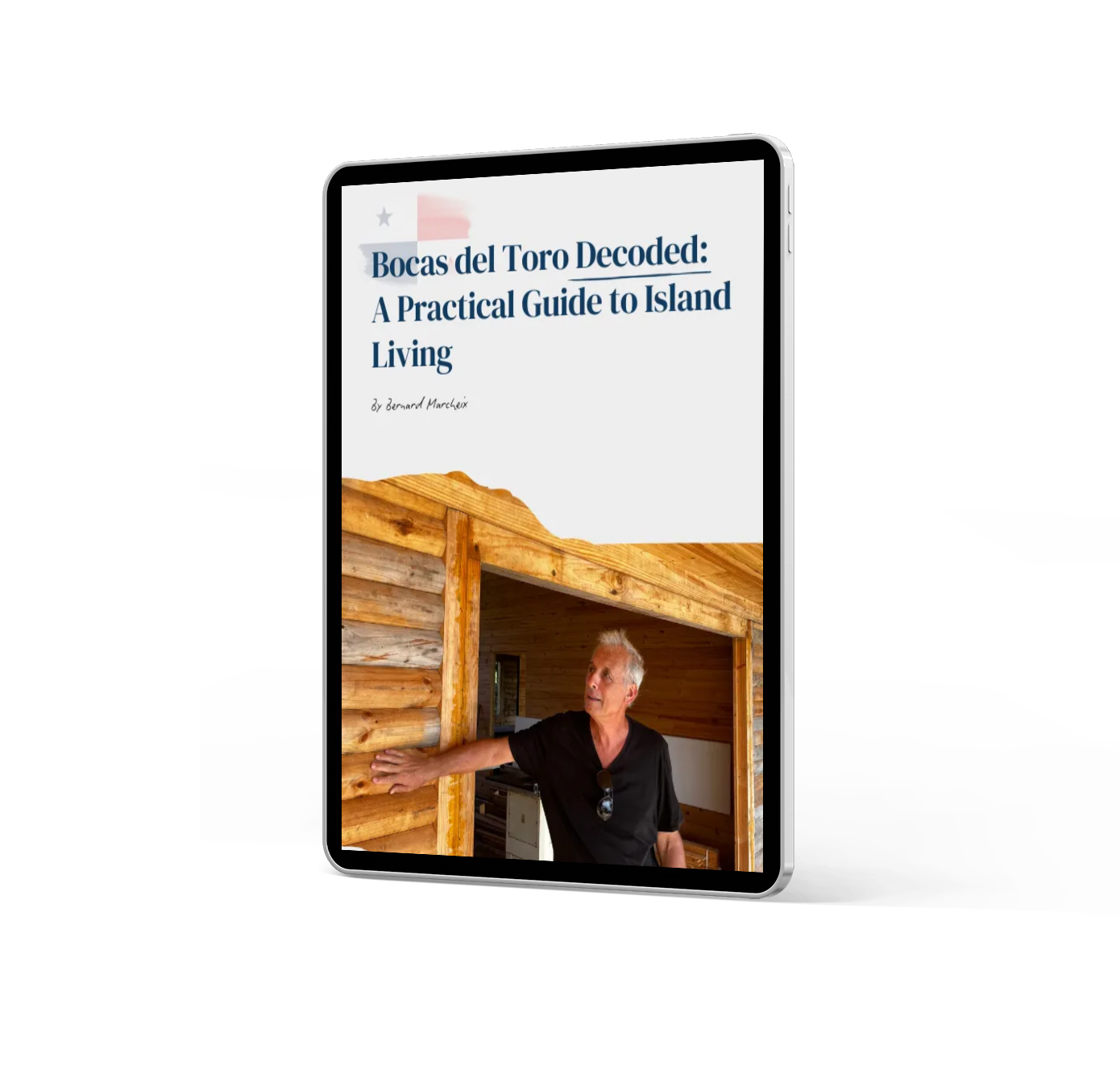When constructing a dock in Bocas del Toro, concrete posts, PVC tubes, and treated wood create a solid foundation. Learn how to choose the right materials, protect your wood from the elements, and apply low-cost techniques like using shingle and sealants to ensure your dock stands the test of time—without frequent rebuilds.
The most suitable solution is likely to choose the option of concrete posts cast in PVC tubes, reinforced with iron bars, and topped with a wooden deck. The concrete inside the PVC tubes will be protected. However, the wooden deck must be treated carefully to avoid needing to rebuild the dock a few years later.
The choice of wood is crucial, particularly regarding its protection. Local woods such as Nispero or Almendro are hard and durable but are becoming increasingly difficult to find and are regulated for harvesting. Treated pine, often imported from Honduras among other places, does not last as well as a suitable local wood.
Regardless of the wood selected, there is a simple, low-cost technique that is often overlooked by builders and individuals. This involves protecting the joists resting on the concrete posts, which support the cross planks, with a covering material. There is tar paper, referred to here as “felpa,” but it does not withstand sunlight for long and eventually disintegrates.
The ideal solution is to use “shingle,” which imitates flat tiles or slate, made from a tarred material with a fiberglass core. Simply position the strips longitudinally on your joists, extending a few centimeters on either side, and give the edges a slight tiled shape so that rainwater runs off without returning to the wood. Then, apply your cross planks on top.
Make sure to seal the heads of nails or screws that have been driven deep enough into the board to create a cavity for your sealant. This will prevent water from seeping in and rotting the wood over time. You can also apply a drop of Sica (high-strength cartridge sealant) under the nail or screw head before finishing driving it into the wood. Additionally, you can cover your planks with the same shingle, which provides a non-slip surface due to its roughness. While it may not be perfectly aesthetic, it effectively protects your wood from the intense heat that causes cracking and from water infiltration that leads to deterioration.
You might also consider installing a device at the dock’s entrance, where it meets the shoreline, to control termites that could infest your wood. A vertical threaded rod anchored in concrete, on which each joist rests, can disconnect the wood from the ground by about twenty centimeters. Termites might create a bridge along the threaded rod, but you can easily monitor and treat it if necessary.
Of course, a dock with a roof would solve deterioration problems, but the construction costs would soar. It all comes down to budget. Keep in mind that any uncovered space, terrace, or wooden stairs is exposed to the elements and the sun, deteriorating quickly and requiring maintenance, which I will discuss further later.



